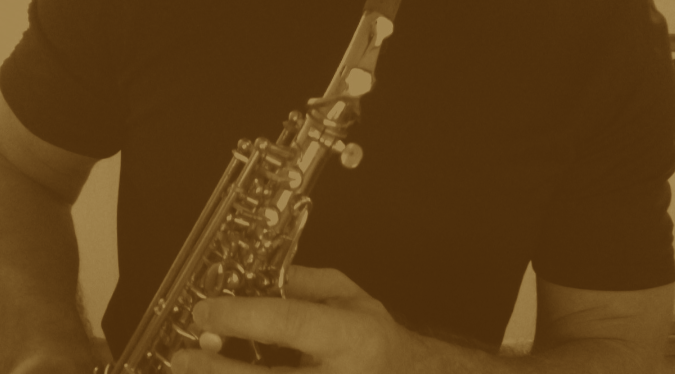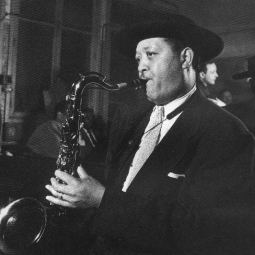Ellery Eskelin and Warne Marsh are about as different from each other as can be, both as tenor saxophonists, and as improvising artists. But they share (or shared, in the case of the late Warne Marsh) one practice discipline in common: improvising very slowly.
They and many other great improvising artists engage in this discipline because it deepens the connection between what they think and feel, and what they play as they improvise. In essence, it helps to make their playing more intentional. More personal (and therefore unique).
If you’re a student of improvisation, you know that the challenges are many. You have to spend a great amount of time learning (and eventually transcending) a great deal of material, concepts and skills.
And if you aspire to the highest level of expression as an improviser, you face this challenge in particular: to play fluently, in real time, without resorting to stereotyped (whether somebody else’s or your own) patterns. Generating original ideas immediately without a safety net. It takes tremendous discipline, tenacity, honest self-evaluation and time to develop the necessary skills at this level.
You must be able to step into the unknown without relying exclusively upon your habits. No small feat.
It is too often that an improviser becomes fluent at the expense of losing spontaneity, deep exploration, and genuine “in the moment” creativity. Practicing slow improvisation can help you develop to bridge the gap and find the balance between spontaneity and fluency.
By improvising slowly you can:
- Become aware of your habits-Do you find yourself playing a limited amount of similar sounding ideas in certain keys or on certain forms, or at certain tempos? Do you find that your rhythmic conception becomes somewhat predictable? Slow improvisation can bring you deeply aware of your stereotyped expressions.
- Prevent yourself from hardening your habits-Once you’re aware of your habitual patterns, you can choose to modify them or to even give them up altogether.
- Direct yourself into new territory-When you’re free of your habitual choices (“responses” is more like it) when improvising, you’re also free to find all kinds of new ways to play with and explore the elements of music. You’re free to surprise yourself. This openness to surprise translates into a highly consistent fluency when improvising.
I’ve been devoting a healthy amount of my own practice time (20-40% of my practice time) to daily slow improvisation for many years now. The rewards are huge, and the satisfaction always immediate (I never tire of this practice). Here’s what I address as I practice this way:
- What I hear– I spend a certain amount of time dedicated to playing each improvisational impulse note-by-note, only changing notes as I hear in my imagination the next note. Besides greatly improving my ear, this also helps me cultivate a deep and fluent connection between my ear and my instrument.
- What I think-Some of my time is devoted exclusively to thinking about new ideas and new material. In this case, I might consciously work with a particular harmonic substitution I’ve been practicing, for example, over a standard song or harmonic cycles. This gives me the chance to turn the material I’ve practiced (the new harmonic substitution) into melodic expression. It also helps me in hearing the new material as I play it, so that when I play only by ear (see above) I’m able to call upon this material naturally and sincerely.
- What I feel-The rest of my slow improvisation practice time is just playing what I feel. No trying for anything. I don’t think about harmonic ideas or melodic patterns. I don’t worry about what I hear in my imagination (or don’t hear). I don’t judge. I just play, trusting and following my muse. This is how I wish to approach improvisation in real life, on the bandstand with other musicians. This practice puts me into a deep meditative state, and it is where I find my true self expression.
I apply this practice to playing over tunes, improvising modally, with melodic shapes, triad combinations, etc., as well as thematic open-ended improvisation and completely free open-ended improvisation. It works well in any context.
So how slow is “slow”? I usually set the metronome at anywhere from 40 to 75 beats per minute (some days I might go as high as 80 bpm, depending on what I’m working on). At these tempos I’m primarily starting with a “single time” eighth note based rhythmic approach.
Of course, as I go along, I broaden my rhythmic expression, incorporating triplets, sixteenth notes, quintuplets and other polyrhythmic and polymetric elements. But I never add velocity to anything that I can’t control and fully hear, choose and understand. I’m also sometimes aiming to play very lyrically at these slow tempos, almost if I were singing instead of playing saxophone.
I address the time/pulse in one of three ways. Either by:
- Playing completely out of time-I do this as I do my “ear only” practice, as well as to connect ideas and work out new concepts (what I “think”).
- Playing in time, allowing myself to stop and go out of time-This is sort of the “in between” phase between working on new concepts and material out of time to actually put them in time. I also might stop just because I’m hearing something in my imagination that I just can’t quite find, or if I come up with a new idea about working with the harmonic, melodic or rhythmic materials.
- Playing in time slowly with no stopping-I do this to help me to crystalize new concepts, shapes, harmonic material, etc., in real time. I also play this way when I’m just playing what I feel, letting the muse unfold. Here it’s just a matter of committing completely to the creative process. This is always the pinnacle of joy for me, where I find surprise and delight in what I play.
I prefer to use the metronome, but play-along tracks are fine, too. Sometimes I’ll use just a slow bass line, or maybe a drum and bass track (instead of a full rhythm section), or even just a drum loop. Whatever you use, make sure that you stay in the slow tempo range I’ve mentioned above. You can also work with different feels (swing or straight) and different articulations. Explore!
One of the marvelous results over the long run when practicing this way (as counterintuitive as this might sound) is that improvising at very fast tempos becomes easier and easier. It does so because I’m able to stay highly connected to what I feel, think and hear. I still have to practice improvising at fast tempos as well (to give my brain a chance to process things at a higher velocity) but the heavy lifting is definitely done at the slower tempos.
So aim your metronome downward, and give it a go. It will help you to imagine, hear, enjoy and trust what you improvise. If you’re patient and persistent, you’ll be thrilled with the results. I’d love to hear about your own experiences with this practice, or any ideas you might have about it.




